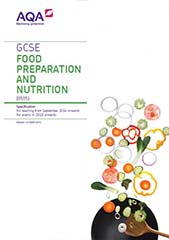3.6 Food provenance
This section requires students to demonstrate their knowledge and understanding of the following subject content:
Environmental impact and sustainability of food
Food Sources
|
Content |
Students must know and understand |
Suggested application and food preparation skills |
|---|---|---|
|
where and how ingredients are grown, reared and caught. |
grown ingredients: fruits, vegetables and cereals reared ingredients: meat and poultry caught ingredients: fish an understanding of:
|
Food and the environment
|
Content |
Students must know and understand |
Suggested application and food preparation skills |
|---|---|---|
|
environmental issues associated with food. |
|
|
Sustainability of food
|
Content |
Students must know and understand |
Suggested application and food preparation skills |
|---|---|---|
|
the impact of food and food security on local and global markets and communities. |
the challenges to provide the world’s growing population with a sustainable, secure, supply of safe, nutritious and affordable high-quality food. Students must have an awareness of:
|
Food processing and production
Food production
|
Content |
Students must know and understand |
Suggested application and food preparation skills |
|---|---|---|
|
primary and secondary stages of processing and production. how processing affects the sensory and nutritional properties of ingredients |
|
|
Technological developments associated with better health and food production
|
Content |
Students must know and understand |
Suggested application and food preparation skills |
|---|---|---|
|
technological developments to support better health and food production including fortification and modified foods with health benefits and the efficacy of these. |
|
To examine, carry out sensory analysis and evaluate existing products that have been modified and fortified. |
